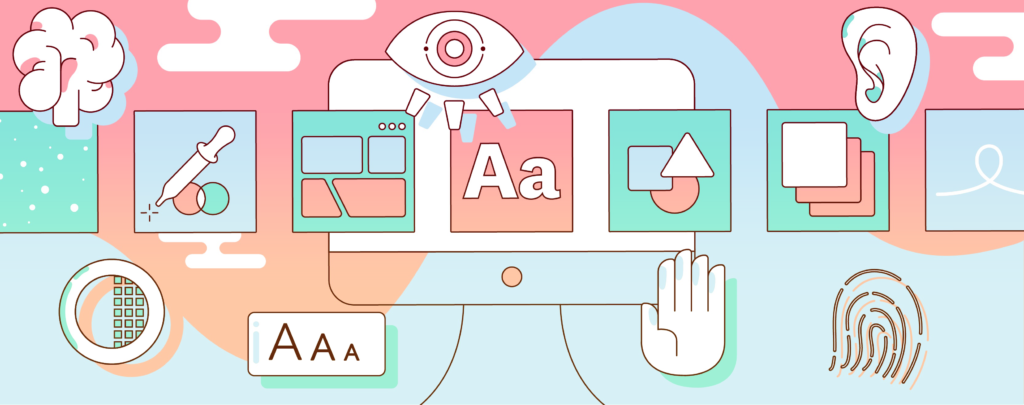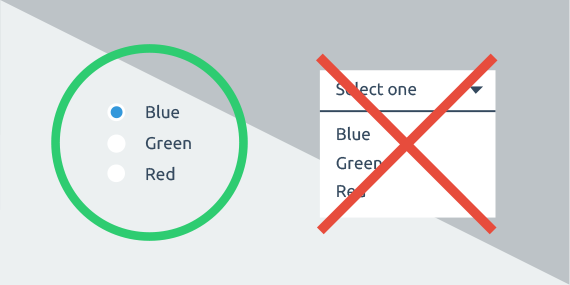Last Updated on October 25, 2023 by UX World
In the modern digital era, the word accessibility holds great importance. Accessibility implies not only normal users but also disabled users. Therefore UX designers must ensure that their designs are accessible to disabled users as it is not only the right thing to do but also a legal requirement in many developed countries.
In this article, we will discuss some best practices which you can carry out to create an accessible design for users having disabilities.
Understand Your Users
For making an accessible design, it’s important to understand the needs and requirements of your users. Doing this will help you to figure out what type of audience you have i.e. some of your users might have disabilities like visual, auditory, cognitive, and maybe physical impairments as well. By understanding the unique challenges that these users face, you can create designs that fulfill their needs.
Use High-Contrast Colors
Users having vision problems can access your design if you include high-contrast colors in your design. High contrast refers to the difference in brightness and color between your text, images, or icons and the background of a design. By this, the users having vision problems can easily access your design and perform smooth operations.
Make Sure to Provide Alternate Text
The alternative text refers to the description of a certain image. Providing alternative text is crucial for the users having vision problems as someone (screen readers, or their assistant) might speak up the alternative text to them through which they will understand what the certain image is trying to communicate to them and then they would perform the required action.
Provide Alternate Input Methods
As a designer, you must keep in mind that some of your users might have mobility impairments. To make your design feasible and accessible for them, you must provide them with alternative input methods. For example, voice search or voice recognition, and allow users to navigate using arrow keys if they cannot hold a mouse due to disability. Along with this if the user can only afford to hold a mouse in hand then provide every type of functionality with the mouse, for example, display a touch keyboard on which the user will click and communicate with you.
Don’t Forget to Provide Captions
In case you are designing a website and you include a video in it for demonstration or communication of important information, then you must provide captions in your video because there can be some users who are deaf or they cannot listen properly. Providing captions will provide them an opportunity to participate and get the information through visual means.
Test Your Product with Assistive Technology
Testing with assistive technology is the best way to ensure that your designs are accessible to users with disabilities. This includes using screen readers, keyboard navigation, and other assistive tools to test the usability and accessibility of your designs.
Conclusion
Creating accessible designs for users with disabilities is an essential aspect of modern design practices. The accessible design ensures that all users, regardless of their abilities, can access and use digital interfaces effectively and efficiently.
To create accessible designs, designers should follow best practices such as providing alternative text for images, using high contrast colors, designing for keyboard accessibility, using clear and simple language, providing clear navigation and labeling, and designing for a responsive layout.
By incorporating these best practices into their design process, designers can create interfaces that are more inclusive, user-friendly, and accessible for all users, including those with disabilities.
In a world that is increasingly digital, creating accessible designs is more important than ever before. By designing with accessibility in mind, designers can ensure that their designs are usable, accessible, and inclusive for all users, regardless of their abilities.
Want to Learn UX Design?
Try Interaction Design Foundation. IxDF offers online design courses that cover the entire spectrum of UX design, from foundational to advanced level. As a UX Design World reader, you get 25% off your first year of membership with the IxDF.
Thanks for reading.
Subscribe for more related articles at UX World.
If you have any questions, contact here: Facebook | YouTube | Twitter | Instagram | Linkedin



